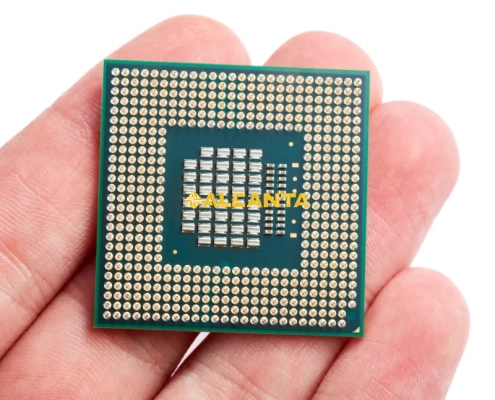PLCC Packages: Enhancing Connectivity in Electronic Designs
In the dynamic realm of electronics, PLCC, or Plastic Leaded Chip Carrier, stands as a pivotal player. A compact, square-shaped package, PLCC encapsulates integrated circuits (ICs) with precision, featuring a configuration of pins that facilitates secure and efficient connection to circuit boards. Renowned for its versatility, PLCC plays a crucial role in the ever-evolving electronics industry. Its significance extends beyond its physical attributes; it serves as a linchpin for diverse applications, ranging from consumer electronics to industrial automation. With a robust design that aids in heat dissipation and compatibility with Surface Mount Technology (SMT), PLCC has become a cornerstone in modern circuit design. Let’s delve into the intricacies of PLCC packages, exploring their features, applications, and contributions to technological innovation.
PLCC Package Features
Physical Characteristics
- Size and Shape
- PLCC packages are standardized, typically measuring 0.1 inches in pin pitch, ensuring compatibility across various applications.
- The square shape of PLCC facilitates efficient use of PCB real estate, optimizing component layout for enhanced circuit integrity.
- Pin Configuration
- With pin counts ranging from 20 to over 100, PLCC offers flexibility for diverse circuit designs, accommodating a spectrum of functionalities.
- The pins are arranged in a circular pattern along the periphery, allowing for efficient and secure soldering onto the circuit board.
- Materials Used
- PLCC packages are predominantly constructed from high-quality thermoplastics, ensuring not only mechanical strength but also resistance to environmental factors such as moisture and chemical exposure.
- The materials used in PLCC production adhere to industry standards, providing a stable and reliable housing for integrated circuits.
Advantages of PLCC
- Heat Dissipation
- PLCC’s square shape, coupled with its exposed leadframe, facilitates effective heat dissipation, preventing thermal issues in high-performance applications.
- Enhanced thermal management ensures the longevity and reliability of integrated circuits, especially in demanding environments.
- Robustness and Durability
- The robust encapsulation of PLCC packages shields the enclosed IC from mechanical stress, minimizing the risk of damage during handling and operation.
- This durability is a crucial aspect, contributing to the overall ruggedness of electronic devices across industries.
- SMT (Surface Mount Technology) Compatibility
- PLCC packages are designed for seamless integration into Surface Mount Technology processes, streamlining manufacturing workflows.
- The flat leads of PLCC facilitate accurate placement on the PCB, enhancing the efficiency and precision of the assembly process.
PLCC packages offer a harmonious blend of meticulous physical characteristics and inherent advantages, making them a cornerstone in contemporary electronics manufacturing.
PLCC vs. LCC: Understanding the Differences
Definition and Characteristics of LCC
- Definition
- LCC, or Leadless Chip Carrier, represents an alternative packaging solution to PLCC, characterized by a lack of external leads.
- LCC packages utilize a flat bottom surface for direct mounting onto the PCB, eliminating the need for traditional protruding leads.
- Characteristics
- LCC packages often feature a compact, square or rectangular shape, contributing to a smaller footprint on the circuit board.
- The absence of external leads simplifies the design and allows for higher pin densities, making LCC ideal for miniaturized and space-constrained applications.
Comparative Analysis
- Size and Form Factor
- PLCC packages are generally larger due to the presence of external leads, making them more suitable for applications where space constraints are less critical.
- LCC, being leadless, offers a more compact form factor, catering to designs emphasizing miniaturization and reduced PCB space.
- Pin Count and Arrangement
- PLCC packages support a wide range of pin counts, typically arranged in a circular pattern around the package perimeter.
- LCC packages, with their leadless design, can accommodate a higher pin density, as the pins are distributed across the entire bottom surface in a grid pattern.
- Use Cases and Industry Preferences
- PLCC finds favor in applications where a balance between size and ease of manufacturing is crucial, such as industrial control systems and automotive electronics.
- LCC is preferred in scenarios demanding high pin counts, miniaturization, and advanced technologies, including mobile devices, wearables, and other compact electronic gadgets.
While PLCC and LCC share some commonalities, their differences in size, pin configuration, and industry applications make each packaging type suitable for specific electronic design requirements. Designers must weigh these factors carefully to choose the optimal package for their intended application.
Popular IC Packages: Beyond PLCC
PLCC Sockets: Enhancing Connectivity
PLCC IC Package Styles
PLCC Package Cost Factors
FAQs About PLCC Packages
What is a PLCC package?
A PLCC (Plastic Leaded Chip Carrier) package is a type of integrated circuit (IC) packaging that encases the IC in a square or rectangular plastic housing. It features leads extending from each side for connection to a printed circuit board.
What is an LCC package?
An LCC (Leadless Chip Carrier) package is another type of IC packaging, distinct from PLCC, characterized by a flat bottom surface without protruding leads. LCC packages often feature a compact shape, allowing for high pin density.
What does a PLCC do?
PLCC packages serve as protective enclosures for integrated circuits, providing a standardized form for easy installation on printed circuit boards. They offer physical protection to the enclosed IC and ensure secure electrical connections through the leads.
What is the difference between LCC and PLCC?
The primary difference lies in their physical design. PLCC packages have leads extending from the sides, facilitating easy soldering to a circuit board, while LCC packages have a leadless design with a flat bottom surface. LCCs often allow for higher pin density and are favored in miniaturized applications.



